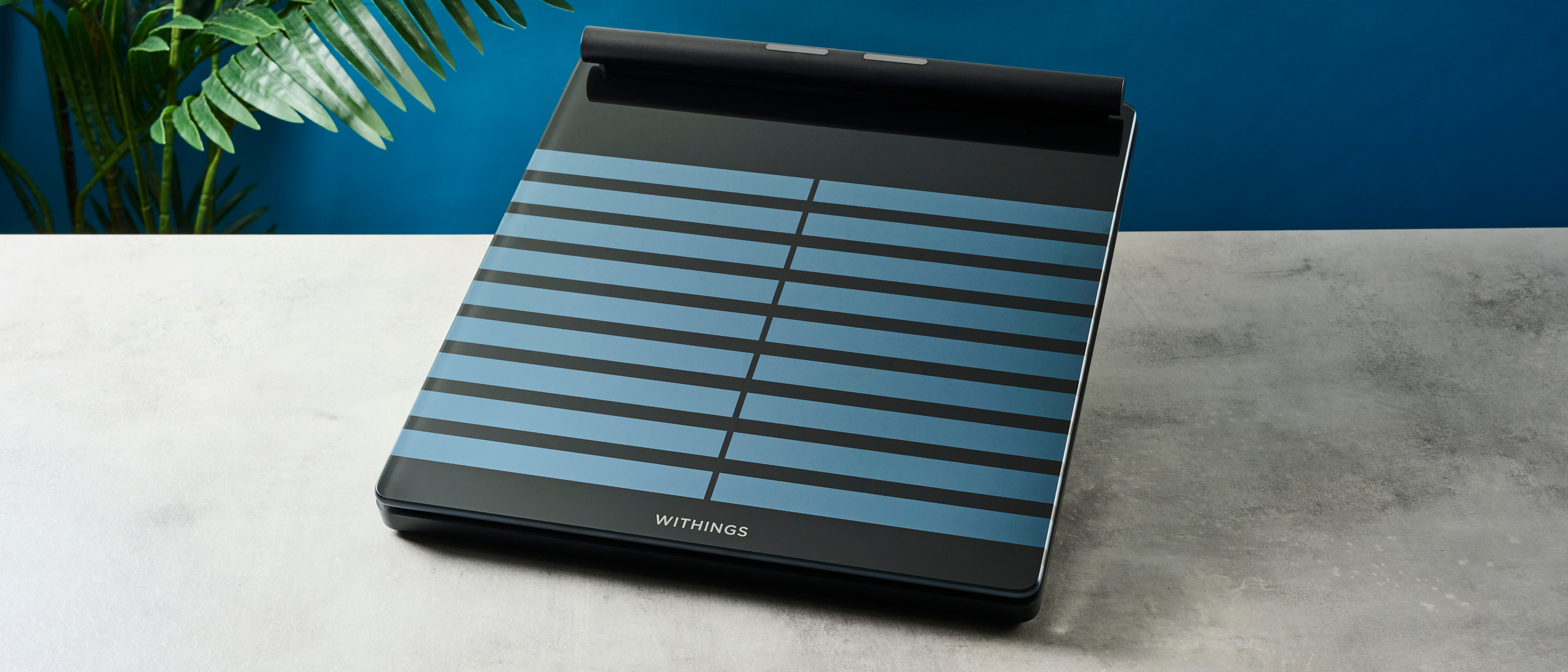Tom's Guide Verdict
The Withings Body Scan is a premium, high-spec smart scale with an ECG, segmental body composition readings, a user-friendly app, and much more. But it’s also $200 more than Withings’ mid-range scale, and could only be necessary for athletes and bodybuilders, or if you’ve been told by your doctor to check on your heart health.
Pros
- +
ECG monitor
- +
Beautiful, informative, user-friendly app
- +
In-depth metrics supported by referenced studies
- +
Personalized ‘Missions’
Cons
- -
Super expensive
- -
Optional subscription costs $99 per year
Why you can trust Tom's Guide
This is a pricey smart scale. Whereas some scales are as little as $25, if you want the best smart scale, you might need to shell out a bit more dough. But the Withings Body Scan is a lot more dough, at an eye-watering $399. But do its extra features make up for its price?
The Body Scan builds on the standard measurements of body fat, muscle, basal metabolic rate and water mass offered by Withing’s basic Body Smart by adding an electrocardiogram (ECG) to the mix, which is capable of analyzing your vascular health.
While I think it’s an interesting feature, it won’t be necessary for the average person. I enjoyed looking at my segmented body composition on a handy mannequin graphic, but I don’t think it’s that useful unless you’re training for a bodybuilding competition.
You might be happy with Withings’ mid-range scale Body Comp instead, which reads tons of composition metrics and vascular health, without the $400 price tag. Perhaps if you’ve been advised to purchase an ECG machine by a cardiologist, this would be the perfect smart scale for you, or if you’re a serious athlete looking to break PRs and demolish the competition.
But is it the right purchase for the average person? Let me help you figure out if this scale is worth $400 in this Withings Body Scan review.
Withings Body Scan: cheat sheet
- Who is it for? If you’re super into fitness and health — or are at risk of cardiovascular or diabetes complications — then this is for you. If you’re more of a casual user, this is overkill.
- What does it do well? The sheer amount of health metrics and depth is insightful and extremely well presented in the companion app.
- What are its weaknesses? Besides its price point, some users have reported the segmental body composition feature isn’t accurate. I found it to be accurate, though.
- What should you use it for? If you’re training for a bodybuilding competition, or have been advised to check up on your heart health by a doctor, or are really (really) into health data.
Withings Body Scan: Specs
| Price | $399/£349 | Row 0 - Cell 2 |
| Dimensions | 12.8 x 12.8 x 1.1 inches | Row 1 - Cell 2 |
| Android/iOS | Both | Row 2 - Cell 2 |
| Max users | 8 | Row 3 - Cell 2 |
| Stats | 15 | Row 4 - Cell 2 |
| Max weight | 440 pounds | Row 5 - Cell 2 |
| Supported fitness apps | 100+ including Apple Health and Google Fit | Row 6 - Cell 2 |
| Batteries | Rechargeable USB-C battery, up to 1 year per charge | Row 7 - Cell 2 |
| Connectivity | Bluetooth and Wi-Fi | Row 8 - Cell 2 |
Withings Body Scan: Price & availability
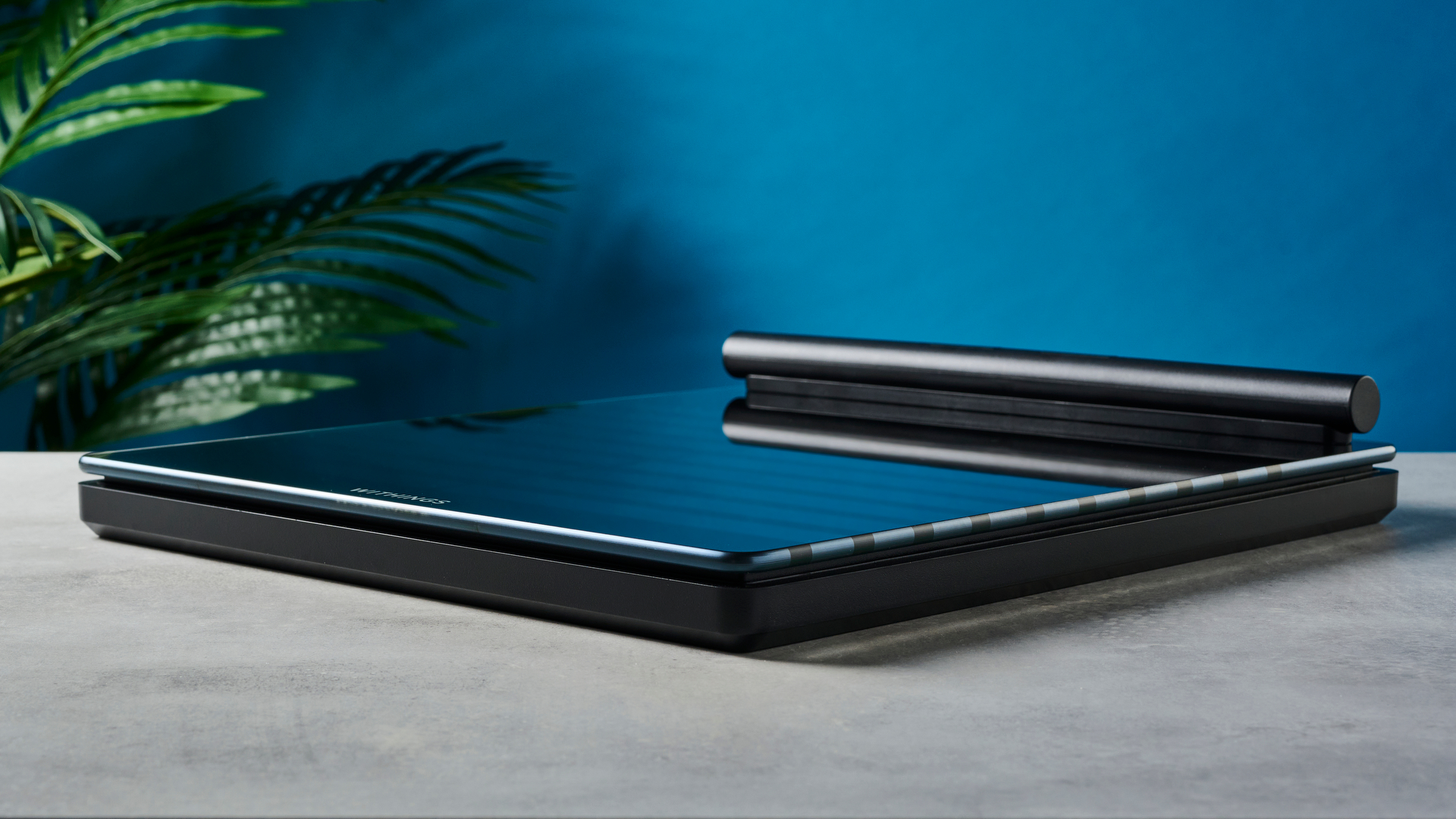
The Withings Body Scan smart scale is $399 from Amazon and the Withings website. When purchasing the scale direct from Withings, users can add on a Withings+ subscription with three free months, and then $99 a year.
Withings Body Scan review: design & display
As with the Withings Body Smart, the Body Scan comes in a smooth tempered glass finish in black or white. I tested the black version, which would’ve been my choice had I bought this for myself.
The display is clear, bright, and readable, although it does take a couple of seconds to come on after you stand on the scale. I especially like the cute waving animation and affable ‘See You Later!’ when it finishes reading your metrics.
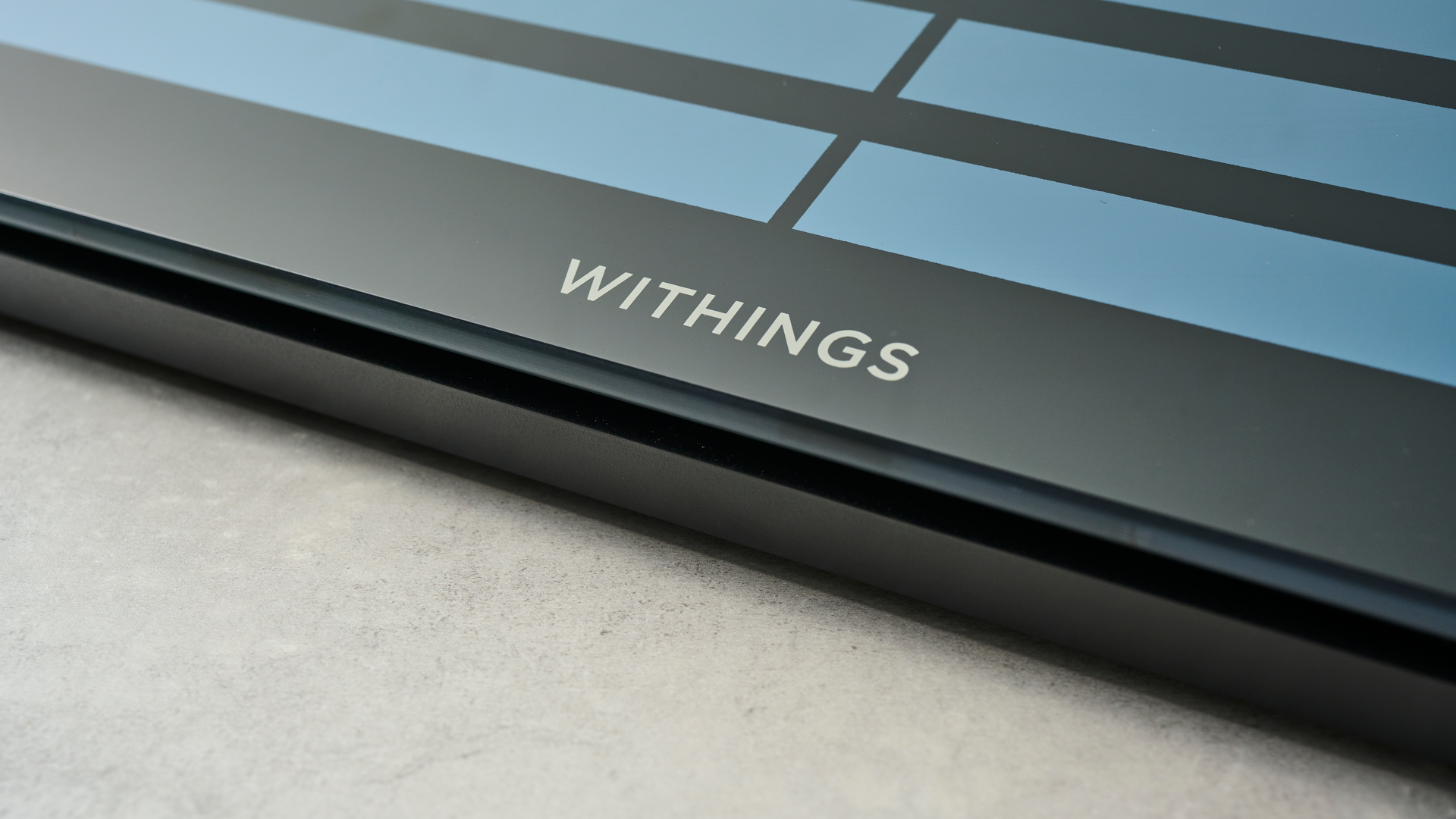
The Body Scan is a heavy, sturdy device with no uneven casing or broken plastic fittings. On top of that, the smooth, tempered glass finish is surprisingly easy to maintain, and even after all my weigh-ins, it’s free of smudgy footprints.
The ECG monitor pull-out handle snaps back into place without having to ease it back manually — but remember, you have to remove your rings before doing the ECG, otherwise it will show an erratic reading.
Withings Body Scan review: setup
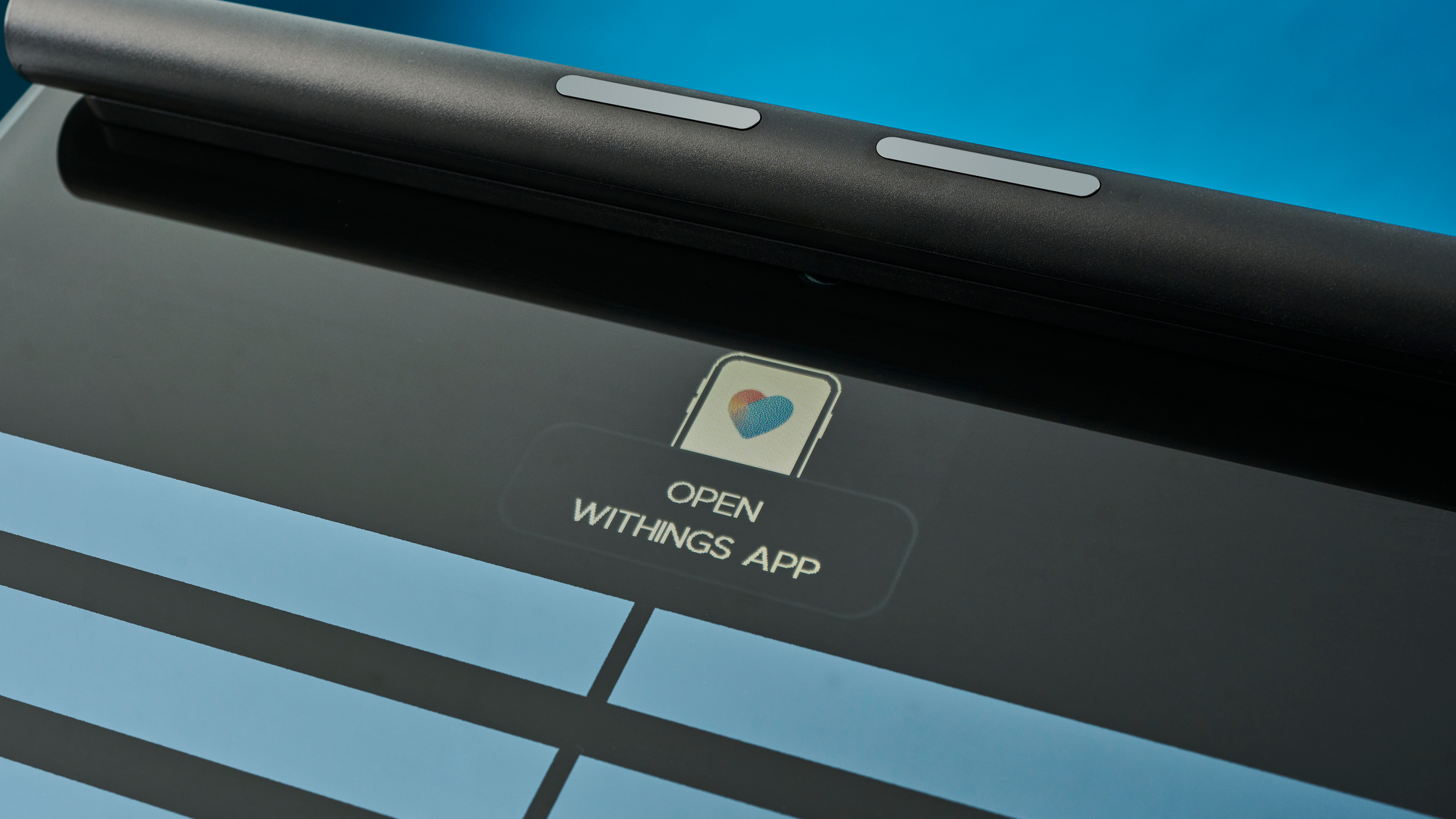
This was perhaps the easiest smart scale I’ve ever set up. I already had the Withings app and a Withings account because I’d just reviewed the cheaper Body Smart. If you don’t already have a Withings scale, though, it’ll prompt you to make an account.
As soon as you make an account, the app will walk you through how to link the scale to your iPhone or Android device. The process is easy: you press the button for three seconds, open the app, and the scale will automatically pair with your phone. Easy as pie.
From then on, setting up your user account is just as straightforward. If you want other household members to use the scale, you can either send them a personalized link to their phone and they can download the app to set up their account.
Or, if the other users are children (or just don’t want the app), you can make separate profiles connected to your account. The Body Scan will work on carpet (I used it in my bedroom, which has thick pile carpet), wood floors and linoleum.
Withings Body Scan review: weigh-in
The Body Scan is packed with features and, if required, it has baby mode, pregnancy mode, athlete mode, and eyes-closed mode (which omits your weight but shows other measurements, such as lean muscle mass).
I was most excited to check out the segmented body composition feature, as I recently had these measurements taken at the gym and was curious to see if the Body Scan matched the gym’s readings.
The Body Scan has to read you a few times across multiple days to get a segmental composition reading and a vascular health reading.
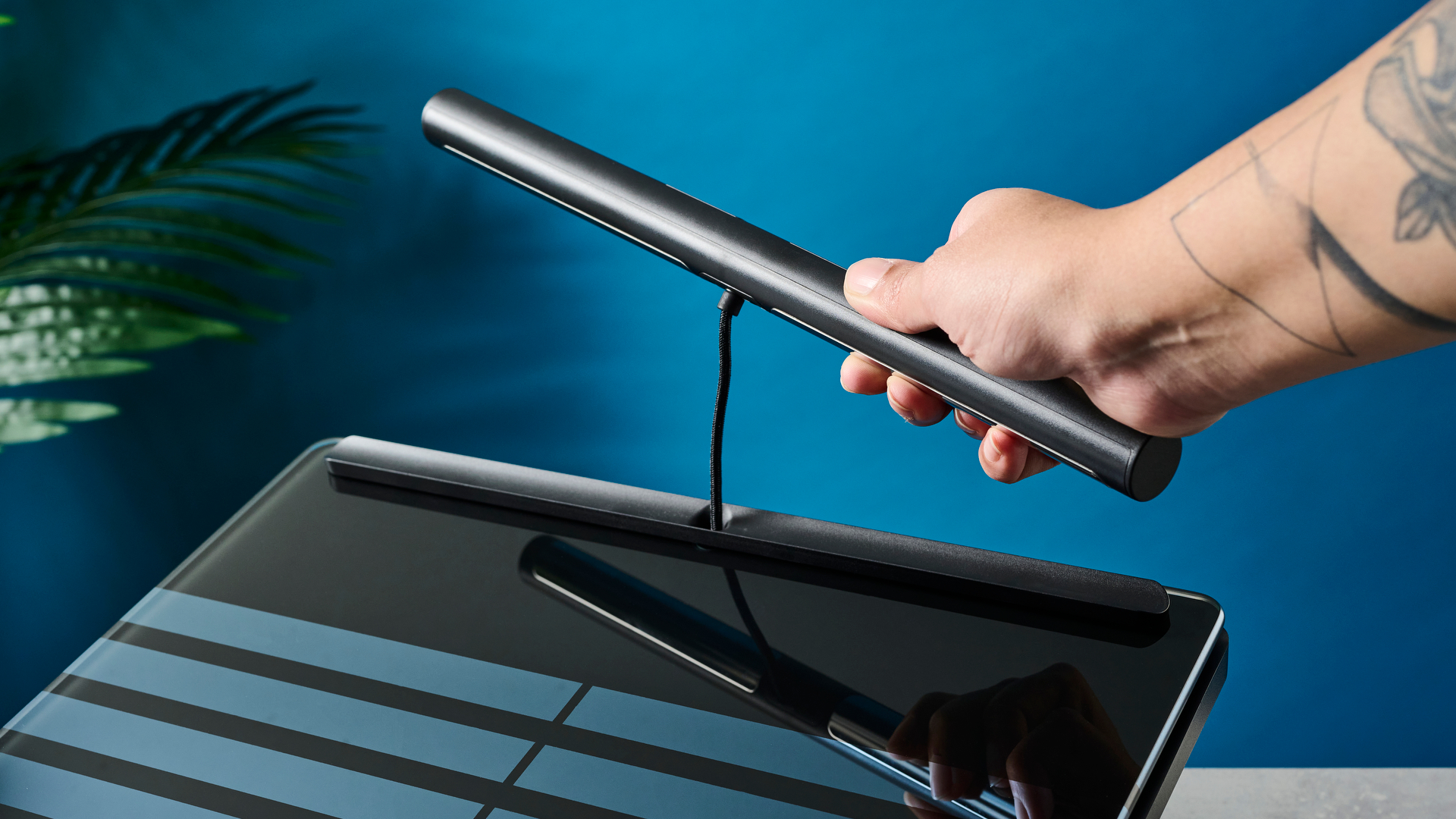
But when you get your body composition reading, it comes with a visual aid to show how your body composition compares to other app users’ anonymized data. Other segmental body composition scales like the Tanita BC-1500 ($549) are capable of this and analyzing your muscle quality — but cannot take an ECG.
Like the far cheaper Body Smart, the Body Scan reads your visceral fat, water index, body fat, lean mass, metabolic rate, metabolic age. But unlike the Body Smart, Body Scan reads your vascular health, nerve health, tells you the weather and air quality, takes an ECG, reads pulse wave velocity, and can detect autonomic peripheral neuropathies and atrial fibrillation.
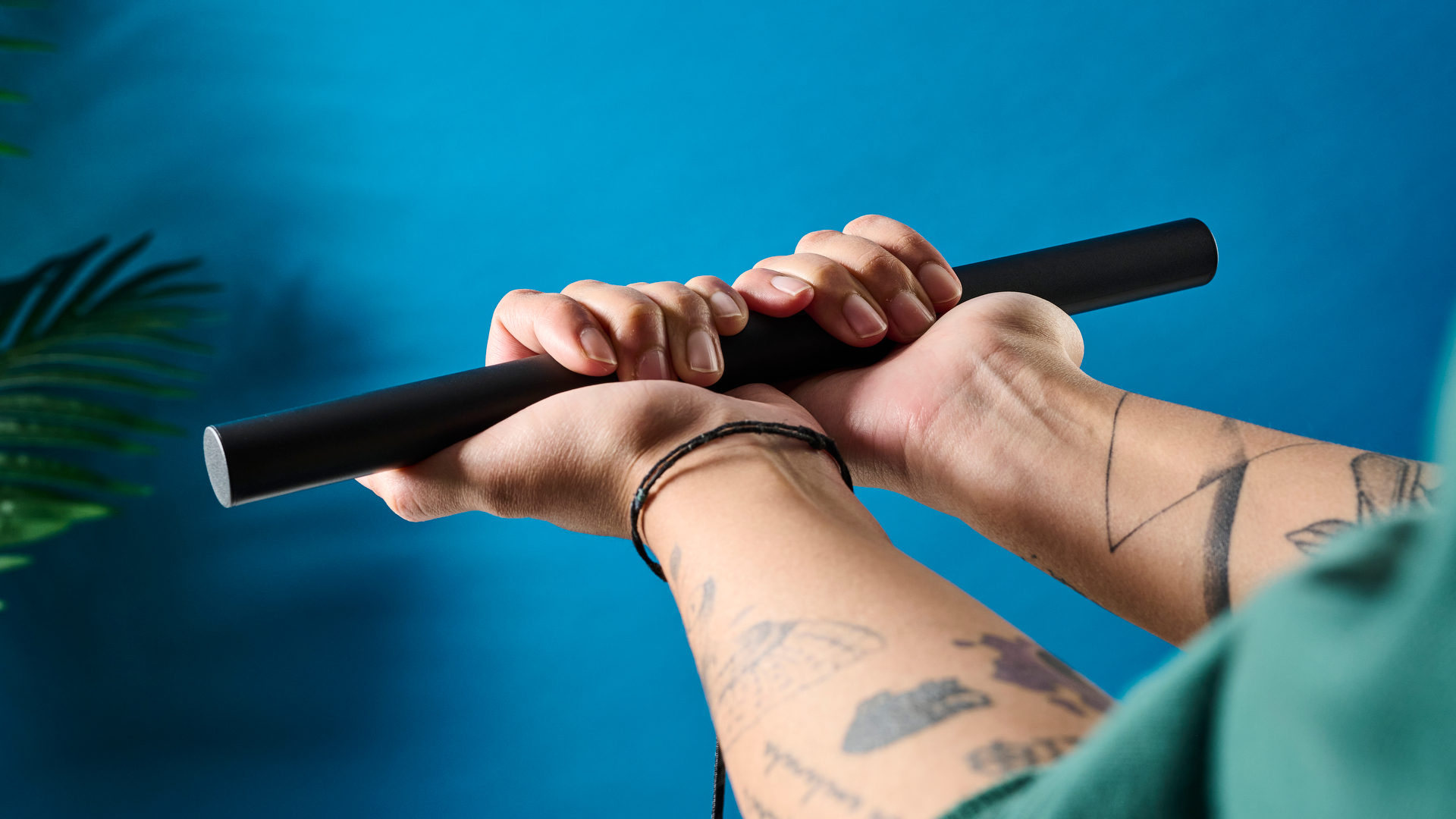
Taking these readings is just as easy as on the Body Smart: simply stand on the scales, grip the handle, and the scale will take care of everything else.
The segmented body composition feature is one of the Body Scan’s top selling points and you can see which is your dominant leg or arm when it comes to muscle mass in the 3D interactive image the app generates for you.
I’m left handed, and after using the scales, I found that my right arm has 4% less muscle than my left. While both of my legs have similar muscle percentages, my left is a little higher, which suggests I’m left-legged, too.
This could be an interesting feature for aspiring soccer players or those getting into athletics, to figure out which leg to lead on. Or which they need to spend more time training or practicing with.
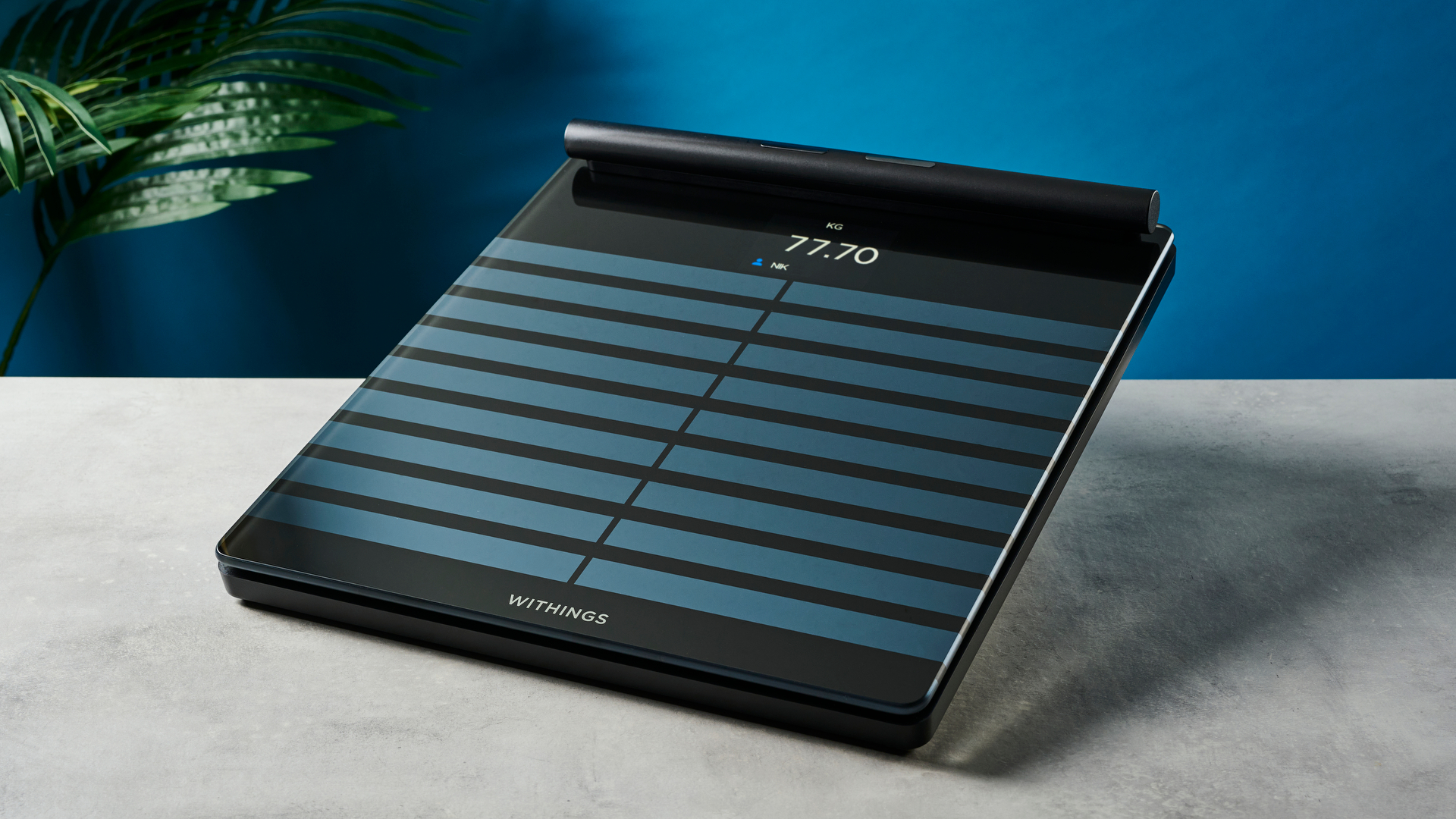
Also unique to the Body Scan is the ECG feature. It goes without saying that you have to remove all rings before you do this, otherwise your graph will be jumping around all over the place.
The Body Scan analyzes your ECG quickly and alerts you to potential issues, like if your heart has a “Sinus Rhythm” (meaning everything’s normal and fine) or if you have bradycardia or tachycardia.
Obviously this is just a smart scale: if it reports something you don’t expect, get in touch with a health professional, as the scales are useful tools, but they can’t make medical diagnoses. Thankfully, if you do need to get in touch with a health professional, you can compile a Health Report in the Withings app to show them.
You also get access to the Pulse Wave Velocity and Vascular Health features, which need five initial readings to generate. However, Withings recommends a month of use to get the most accurate results, as measurements can vary each day, and I’d be inclined to agree.
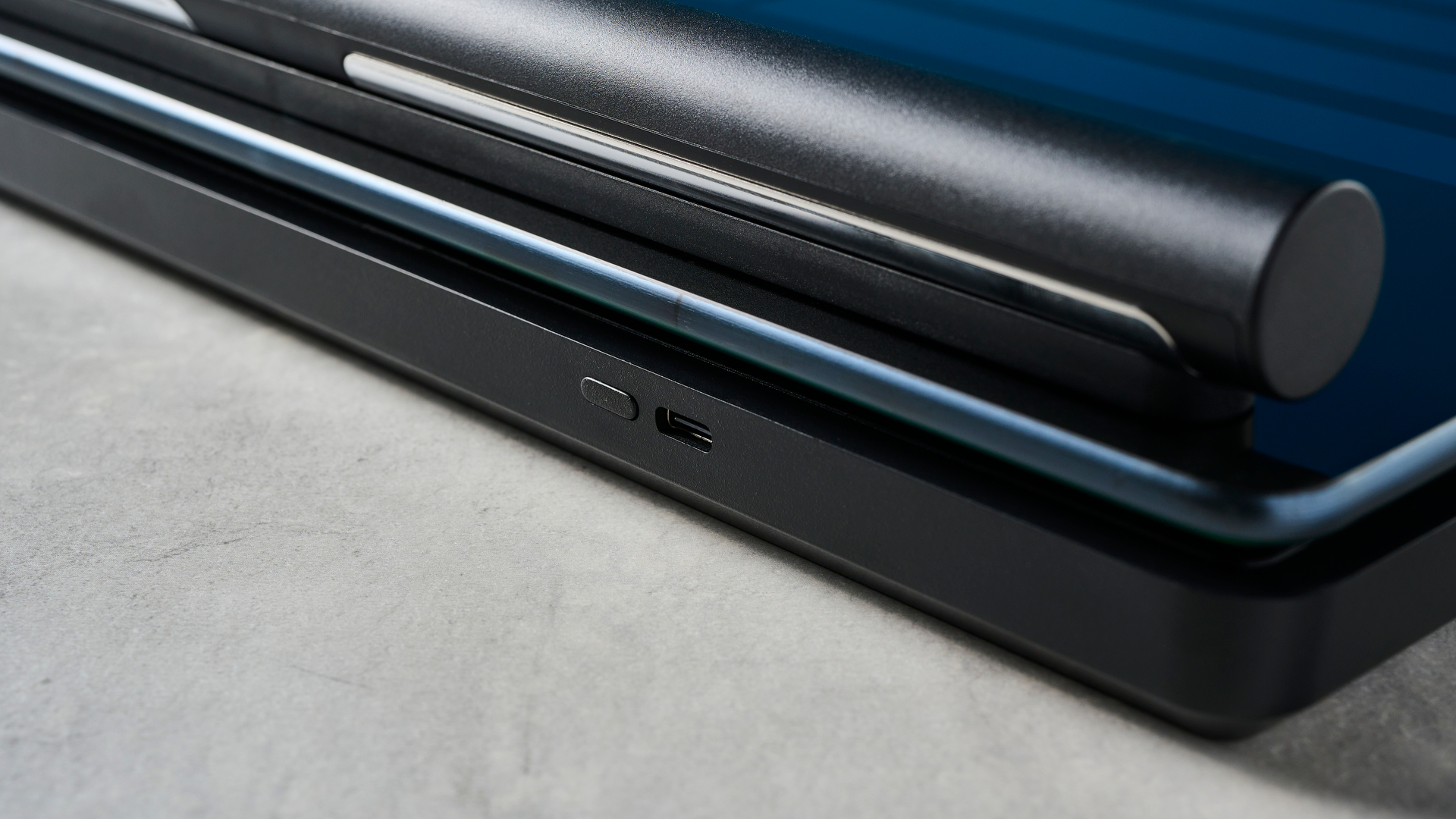
My vascular health readings varied between 23 years and 25 years in just three days, adding two years to my vascular age. I’d be interested to know which activities I participated in to cause such a sudden increase, but it soon settled into a much more consistent number the more I used the scales.
While much of the weigh-in process is similar to the Body Smart, if you need an ECG monitor for health reasons, you will have to pay extra for the Body Scan. If you’re in this situation the Body Scan makes for a sensible purchase but I don’t think this feature is necessary for casual fitness hobbyists or the average person.
Withings Body Scan review: App features
I’ve used a fair amount of health apps. Some are straight-up bad, some are better, and some are really good. Withings falls on the latter end of the spectrum, being really, really good. The UI is beautiful, clean, and readable, and the graphics are gorgeous.
The font is great, the color palette is modern and cool, and the graphs are effortlessly analysable, too. I have nothing bad to say about this app, other than the fact that if I’m spending $400 on a smart scale, I don’t think I should have to pay $100 extra a year to fully utilize the companion app.
While you can still access all of your health metrics with the free app, Withings+ ($99) reveals a whole library of health articles, fitness plans, meals, and the two greatest appeals: ‘Health Improvement Score’ and ‘Complete Health Assessment’. These two functions effectively compile all of your health data and, over time, give you an improvement target. For this review, I used the free version.
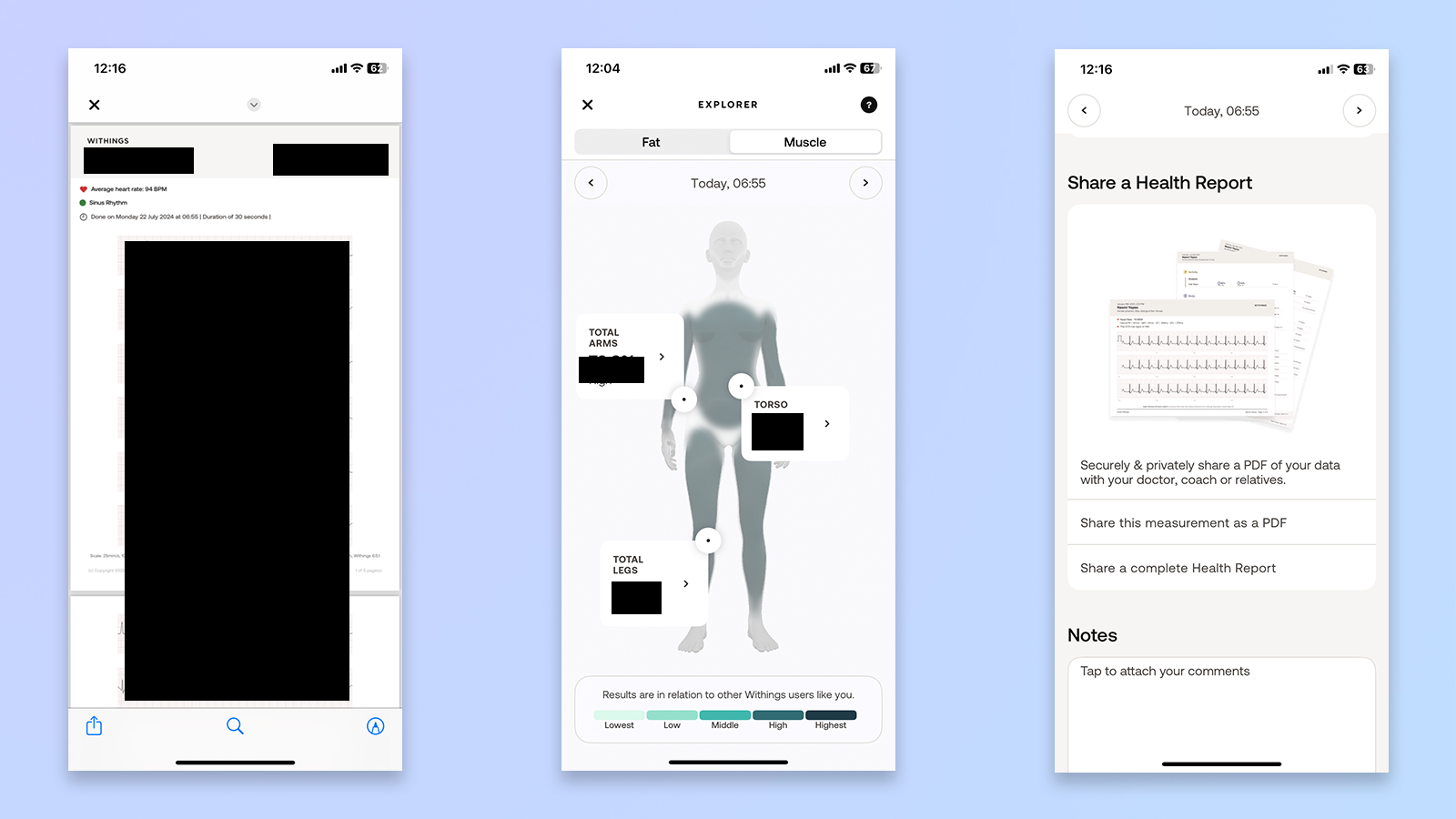
The Withings app comes laden with helpful and easy-to-read articles about sleep hygiene, how to stay hydrated, and introductions to basal metabolic rate (because I didn’t know what that was before I used this scale).
There are hundreds of articles to peruse in your own time, or the Withings app will prompt you to read new ones if it thinks they’re relevant to your fitness goals. As my fitness goal is to gain muscle, Withings sends me daily bite-sized articles (called ‘Missions’ in the app) that are sort of motivational tidbits.
If you’re close to completing a Mission, you get a celebratory graphic and a big ‘Congratulations’ popup, which I appreciated.
Withings Body Scan review: compatibility
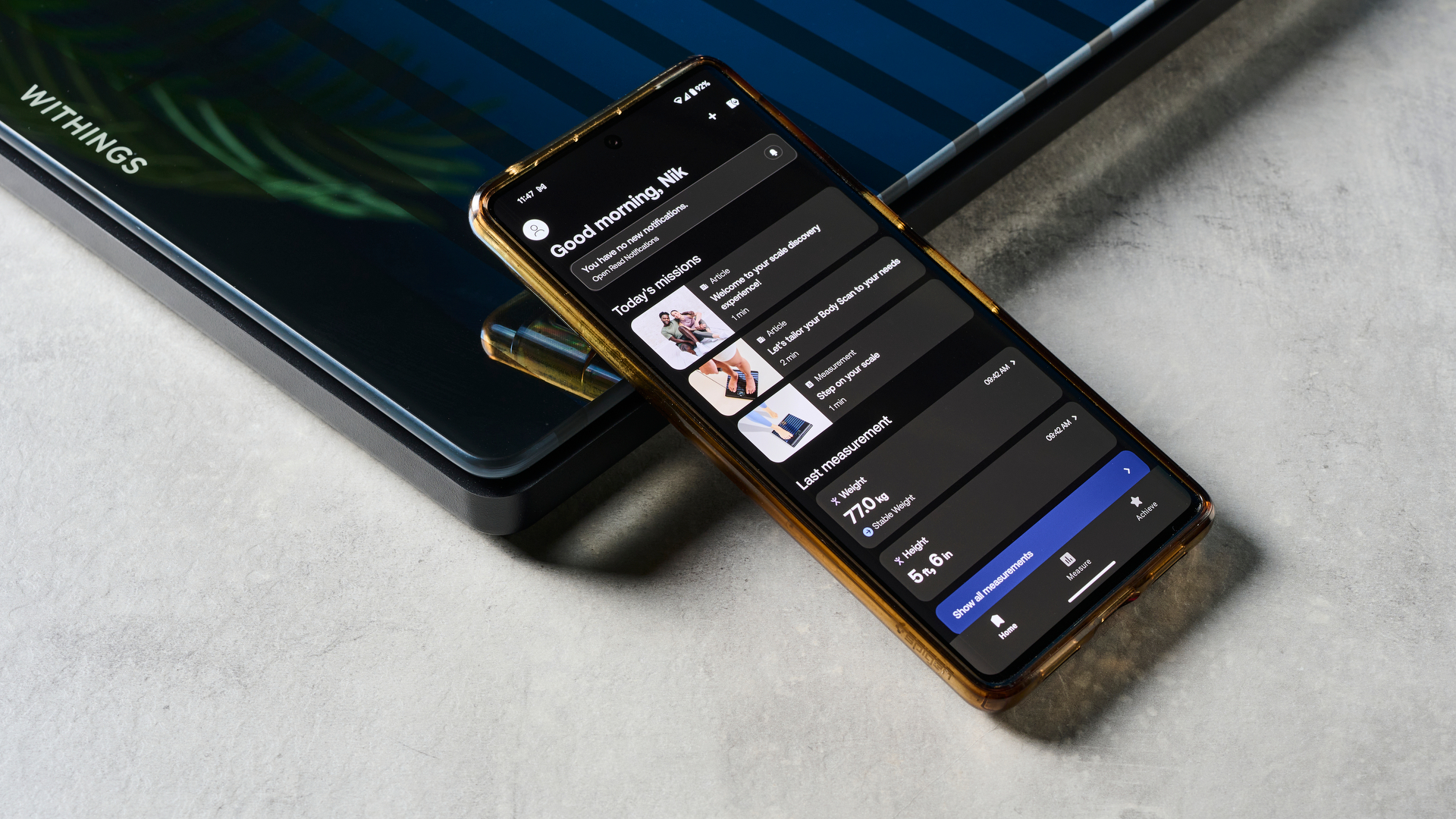
Withings has an entire bastion of compatible third-party apps. Withings supports a whopping 100+ apps ranging from Apple Health, Google Fit, to Strava and MyFitnessPal. If your fitness wearable links with your phone’s native software (Apple Health or Google Fit/Health Connect), it’ll link with your Body Scan.
This range of direct compatibility is superior to that of the Renpho Smart Body Fat scale, which you will need to link to your phone, then host third-party app data through the native software instead of directly into the scale.
Should you buy the Withings Body Scan?
If you’re a serious bodybuilder or you’re worried about developing a heart problem or complications from diabetes, I think this would be worth your money. But only with the advice of a qualified medical professional: this scale is not a doctor and is not comparable to a real check-up.
However, if you’re just a casual gym-goer like me, you’d be better off with the simpler Body Smart or Body Comp. I find the Withings app far better than the Wyze app — incomparable, really — so you’ll need to figure out how important that is to you before purchasing.
If you want a super basic smart scale for general body fat percentage and no scientific journals in-app, you’d be fine with a Wyze. But if you want a slick, usable app, bursting with information, I think a Withings is a good investment — but maybe you only need the Body Smart.
What makes the Body Scan so pricey is its cardiovascular health information, so if you don’t need that, I don’t think this particular smart scale is worth the $400. But if you do, then with a Withings Body Scan, I think you’d be in good hands.

Erin Bashford is a staff writer at Tom’s Guide, covering reviews. She has a Masters in Broadcast and Digital Journalism from the University of East Anglia and 7 years of experience writing music, events, and food reviews. Now she’s turned her attention to tech for Tom’s Guide, reviewing everything from earbuds to garlic crushers. In her spare time you can find her reading, practising yoga, writing, or stressing over today’s NYT Games.
